WhatsApp Chatbot: What It Is and How To Set It Up in 2025?
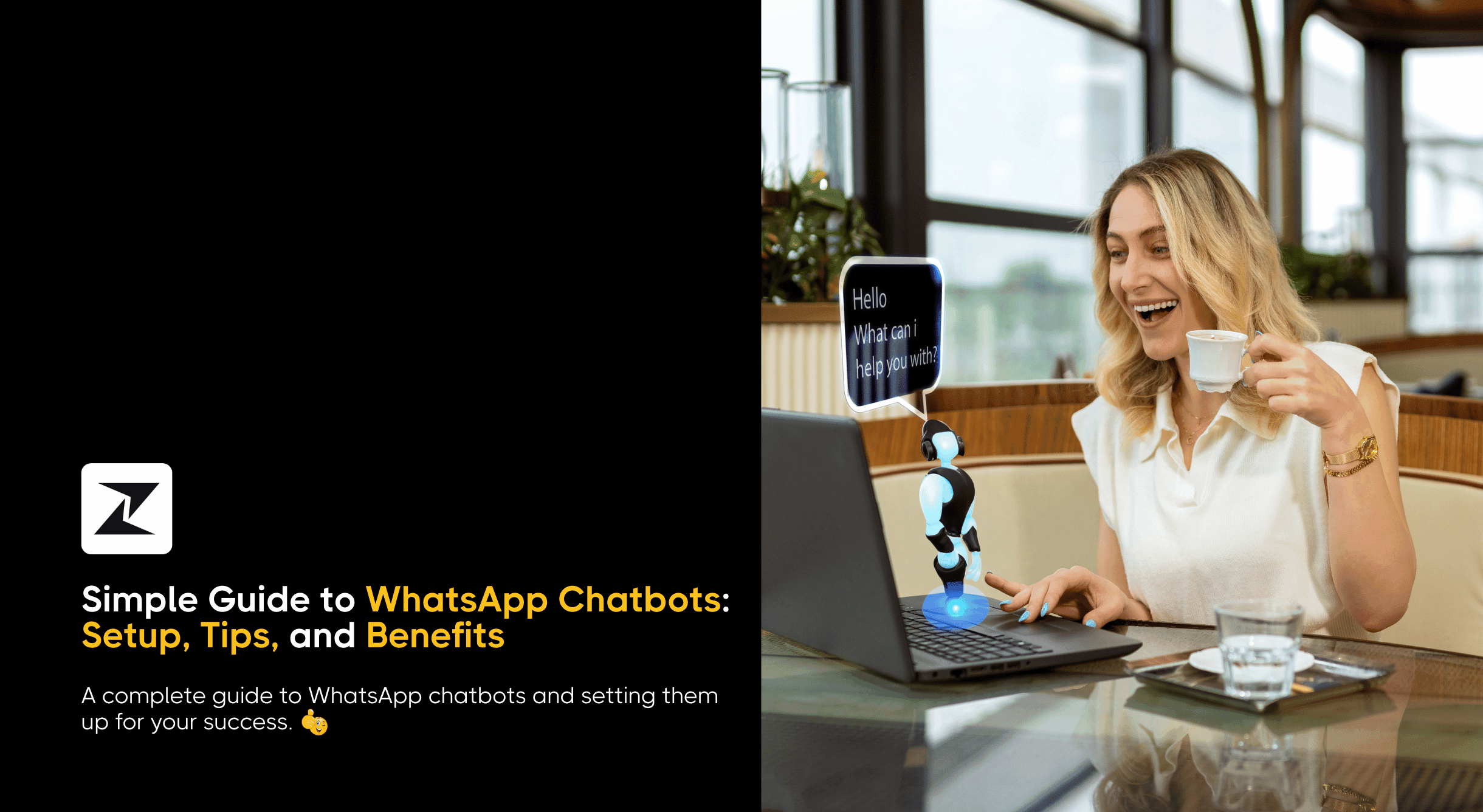
Have you ever come across an issue with a product you are using or want to know additional details about one prior to making a purchase? What’s the most common thing you do to resolve it? The first thing most of us do is to look for self-help content and when that doesn’t help, we reach out to the business directly.
Usually, after connecting with a brand, you get a “we will get back to you message.” However, these days, businesses have started implementing chatbots to address customer concerns quickly without having them wait for a long time.
WhatsApp is one of the most used communication channels that is preferred by both businesses and customers alike. So, having a WhatsApp chatbot in place can significantly streamline your business communication.
In fact, 92% of brands are thinking of adopting an AI-driven chatbot for their customer engagement. In addition to that, WhatsApp offers other customer support features to optimize your customer service activities to build trust and rapport to get more sales.
That being said, in this blog post, I'll explain what a WhatsApp chatbot is and how you can set one up for your business. So, without further ado, let’s delve into it and see how you can use it to boost customer engagement!
What is a WhatsApp chatbot?
A WhatsApp bot, implied by its name, is an algorithm that utilizes AI and Natural Language Processing (NLP) to conversate with customers and provide resolution to their problems or offer them relevant information to point them in the right direction.
Furthermore, you can modify the chatbots to increase conversions by adding interactive buttons. For example, you can use a chatbot to send personalized product suggestions to promote your offerings and get purchases directly from the app with CTA buttons like “Buy Now” or “Add to Cart”, resulting in a better ROI via WhatsApp for your e-commerce business.
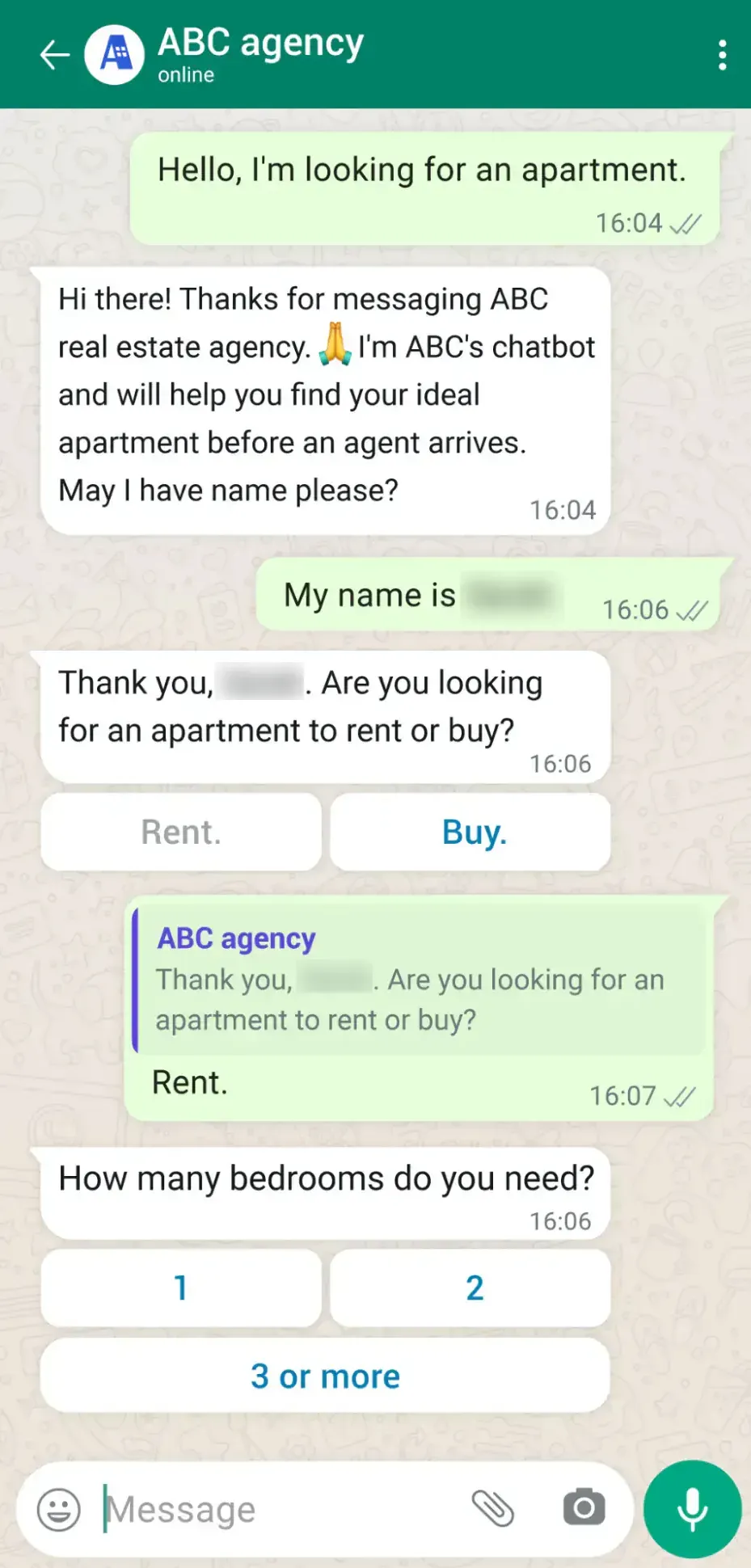
What are the advantages of using WhatsApp chatbots?
Have you heard of the phrase, “You might be sleeping but your customers aren’t”?
It means that your customers can send you a message at any time around the clock, and still expect a quick response from you. So, instead of leaving them hanging till it’s time for your support or sales team to get back, wouldn’t it be better to help them out with a chatbot?
Having said that, here are some of the benefits of implementing a WhatsApp chatbot for your customer support activities:
Deliver better customer support
The greatest advantage of WhatsApp chatbots is their ability to provide quick answers to customers’ questions. These lightning-fast replies ensure that customers feel like they matter to you, thereby allowing you to build a loyal customer base for long-term success.
Save time for your support teams
By automating repetitive conversations and training your WhatsApp chatbot to reply to common questions, can free up valuable time for your support agents. This way, they can focus on helping customers resolve critical issues and improve the sales efficiency of your internal teams.
Start automating your WhatsApp conversations with Zixflow.
Using our workflow automation editor, you can design a custom chatbot to interact with your customers with minimal human intervention.
Try it OutGet more leads and boost selling opportunities
WhatsApp chatbots can also be used to attract new prospects and increase your chances of getting more sales. By providing relevant content and helpful tips to prospects, you can convert them into paying customers via the chatbot.
For example, if a prospect wants to learn more about your business or its offerings, the chatbot can send meaningful images and videos, enabling them to make an informed decision.
Around-the-clock engagement
As I mentioned before, customers are active throughout the day and can connect with you anytime. But if you have a WhatsApp chatbot running to handle these incoming queries, you don’t have to worry about missing any conversation.
Also, since this chatbot is up 24/7, it eliminates the need to hire additional support reps to cover the after-office hours. You can improve the cost-effectiveness of your WhatsApp marketing by letting the chatbot manage frequently asked questions and if human intervention is required, it can escalate the issue for your team to take a look at the earliest.
How to set up your WhatsApp chatbot?
After understanding the benefits offered by the WhatsApp chatbot, now it is time to see how you can set up a WhatsApp chatbot for your business. Below is a step-by-step guide on setting up a chatbot and integrating it with your WhatsApp account. So, let’s get started.
Create your WhatsApp Business profile
The first step to building a WhatsApp chatbot is to have a WhatsApp account. After all, you need a working account before you can start automating your conversations.
You can create a WhatsApp Business account using the WhatsApp Business app. However, it would be better to set up the WhatsApp Business API as you can use it for streamlining your WhatsApp efforts apart from creating a chatbot.
To set up an account using the Business app, you need to simply install it from the Play Store or the App Store and enter relevant business details. But if you decide to get the API up and running, here is an in-depth guide on setting up the WhatsApp API.
Or you can watch the following video for the same as well.
Select a WhatsApp chatbot software
Now that you have an account, the next step is to get yourself a WhatsApp chatbot tool. This is because you need a platform that offers automation features and a chatbot builder to design your bot.
For this, you can try Zixflow. With Zixflow’s WhatsApp chatbot editor, you can create a bot that can both initiate a conversation and reply to the messages sent by your contacts. The chatbot editor of Zixflow offers a drag-and-drop builder that doesn’t require any coding knowledge to get started.
Building your WhatsApp chatbot
Finally, now is the time to craft your chatbot. As I said before, you can create a chatbot for both starting and responding to conversations. With Zixflow Flows, you can use an intuitive chatbot builder to set up a chatbot that can manage both new and ongoing conversations.
Additionally, by leveraging the WhatsApp Business API integration, your chatbot can effectively use the saved messaging templates to send personalized and relevant messages that fit the needs of your customers.
You can start by determining the condition of the chatbot. It can be anything from submitting a form, reaching out to you on WhatsApp, or clicking on the Click-to-WhatsApp ads.
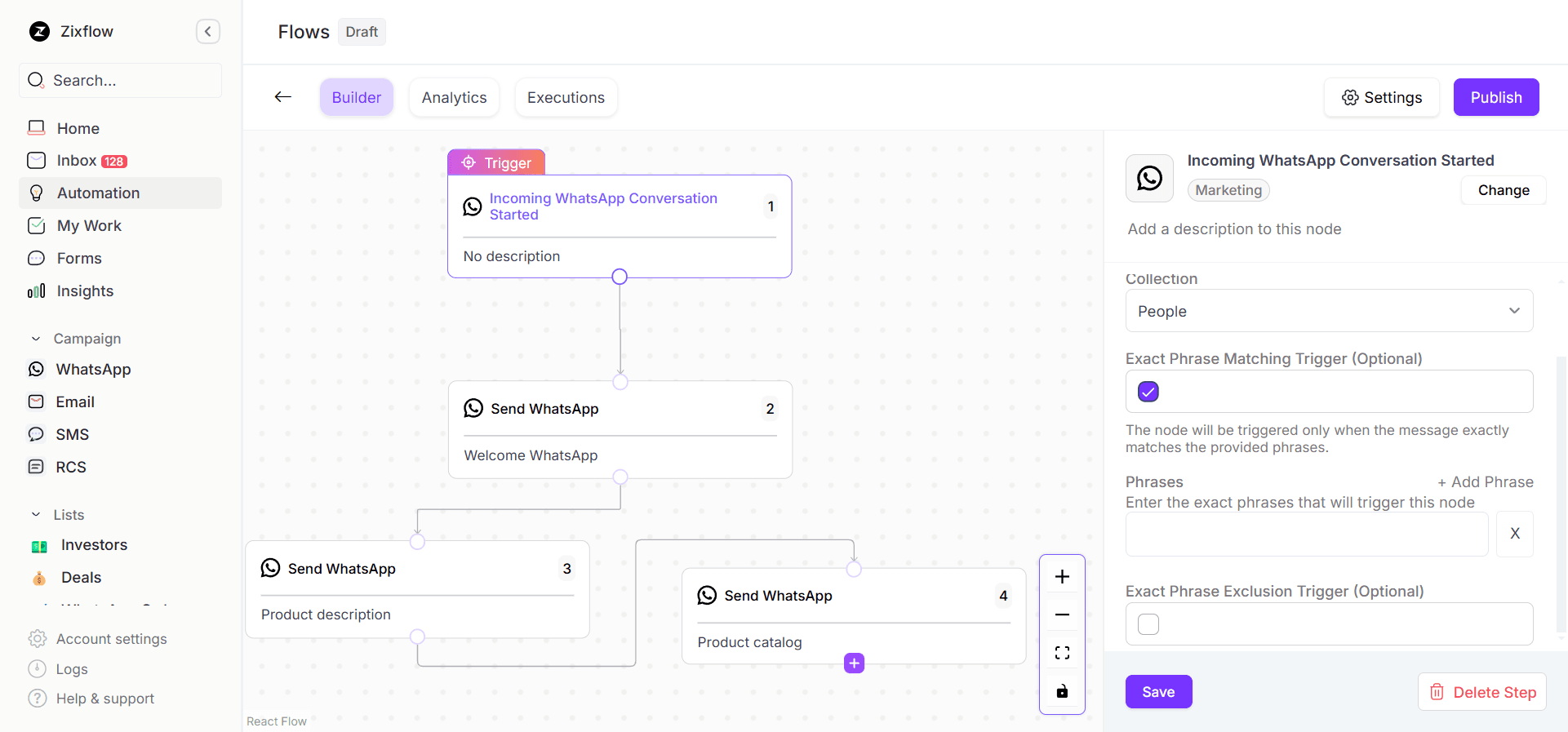
After that, you need to choose the actions you want your chatbot to take. This includes crafting the message that will be sent, the phone number it will be sent from, and whether you want the bot to wait for a response from customers.
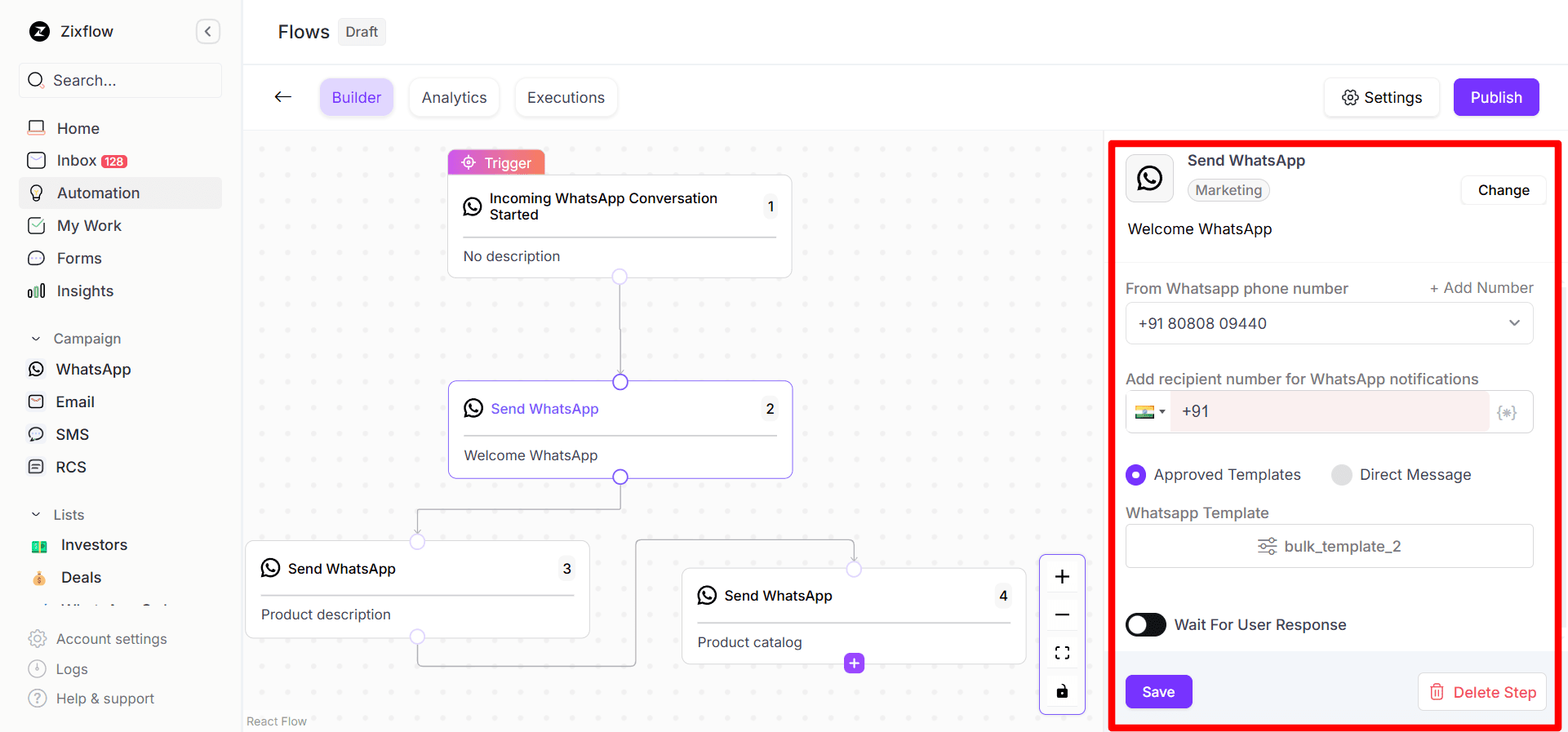
Similarly, by repeating the same process, you can create a customized chatbot for your WhatsApp marketing strategy. Once you are satisfied with the bot, you can click the publish button to take it live.
Some best practices for implementing a WhatsApp chatbot
Having a WhatsApp chatbot can greatly streamline your WhatsApp outreach, allowing you to make the most of your efforts. That being said, there are a few best practices you need to follow to increase the efficiency of your chatbot. These are as follows:
Make your chatbot sound & interact as human
No one wants to be stuck in a never-ending conversation with a bot. Your customers want answers to their questions or solutions to their problems. This is why, it is important to ensure the chatbot sounds human.
What this means is sending relevant, helpful content or responses to customer queries rather than simply replying. Additionally, the use of human-like language and make use of stickers or emojis to make the conversations more engaging.
Craft a human-like chatbot to streamline your WhatsApp engagement.
With Zixflow, you can set up a chatbot that can both initiate a conversation and keep one going effortlessly.
Book a DemoConstant optimization
Your chatbot needs optimization to make sure it can handle issues effectively. One way to do this is to gather customer feedback on how their experience has been conversing with your chatbot.
You can then implement this feedback to improve the responsiveness and efficiency of the WhatsApp chatbot. Also, collecting customer feedback signals that you value their input, enabling you to establish long-term relationships and create a WhatsApp community for long-term business success.
Human support option
Although a chatbot can run 24/7 and manage a wide variety of issues, it still cannot handle complex queries that need human intervention. So, when that happens, it is crucial that there is an option for escalating the chat to the next level.
Ensure transparency and safeguard data
Even though customers are talking with a WhatsApp chatbot, it is necessary to ensure safe conversations and protect customer data from leaks. By taking advantage of your chatbot platform, you can make sure customer details are saved in a secure location.
Zixflow provides state-of-the-line security features. For example, it is a GDPR-compliant solution with the platform hosted on Amazon Web Services (AWS). Plus, the database is protected with top-notch enterprise-grade security, ensuring access to only authorized users. The Cloudflare firewall protects messages with end-to-end encryption to make sure data doesn’t get leaked during the transmission.
Keep track of your chatbot metrics
Since the chatbot messages are sent via the WhatsApp Business API, you can monitor its effectiveness by tracking the key performance metrics like open, response, and overall customer satisfaction rates.
In addition to that, you want to update your chatbot as your customers and business grow. For example, you want your chatbot to provide the latest information about your products, and upcoming details, and humanize the interactions for enhanced experience.
Common use case of WhatsApp chatbots
After learning about the nitty-gritty of WhatsApp chatbots, let’s take a look at how they can be used for businesses operating in various industries. Whether it’s about scheduling a meeting or monitoring the status of a delivery, WhatsApp chatbots can be used to provide all kinds of information.
E-commerce
E-commerce businesses can streamline their outreach conversions with the help of WhatsApp chatbots, offering an all-around engagement to their customers. With the chatbot, you can offer personalized product suggestions and address product-related inquiries.
Your chatbot can send tailored products that match the interests of the customers and convince them to think about making a purchase by using social proofs like ratings and reviews.
Another way to use a chatbot for your e-commerce business is to let your customers track the expected delivery date of their orders. By adding the real-time delivery status to your WhatsApp CRM and letting the chatbot access this information, you can allow customers to track how far their product has reached and when they can expect it.
The chatbot can send abandoned cart reminders to win back customers and compel them to finish the checkout process.
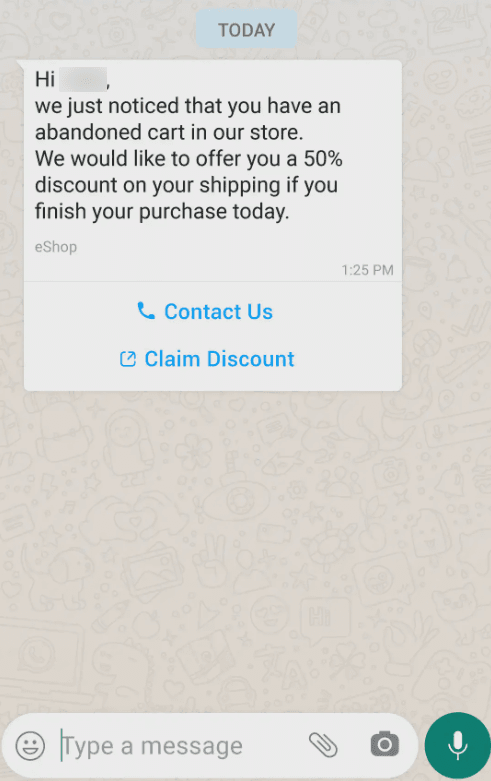
Also, customers usually have questions about your return policies along with the payment methods you support. By having a chatbot, you can automate all these questions so your support team doesn’t have to spend time handling them.
Financial services
If you are running a business that offers financial services or products, then WhatsApp chatbots can be used by your customers to check their account details like balance or transaction history without having to log in to their account.
Furthermore, your chatbot can also provide instant assistance regarding loan eligibility, interest rates, EMI calculations, and other account features. On top of that, the chatbot can help your customers stay safe from online fraud by offering safety tips and updates to your business policies.
Overall, with the digitization of banking processes, WhatsApp chatbots serve as a great tool to let you deliver information in a streamlined manner. With Zixflow as a Meta-partnered WhatsApp platform, we can allow new-age finance businesses and banks to provide an enhanced customer experience that is both safe and easily accessible.
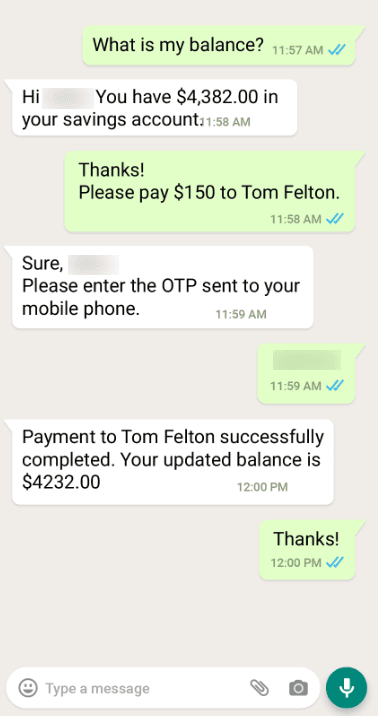
These are just some of the common use cases of WhatsApp chatbots. Apart from that, you can use it for healthcare, hotels, and tourism agencies.
Ready to set up your WhatsApp chatbot and drive interactions automatically
Taking into account the market share of WhatsApp, it is obvious for you to include it in your marketing strategy. With users all over the world using it for everyday conversations, you have an amazing channel to stay in contact with your customers.
No matter if you want to optimize your customer service by offering canned replies and significantly reducing the response time, thereby effectively driving prospects across the stages of the sales pipeline.
Having said that, the possibilities of utilizing a chatbot are endless. As AI becomes more and more advanced, so do these chatbots, resulting in better customer engagement.
Moreover, with tools like Zixflow, you can unlock the full potential of WhatsApp’s capabilities and provide a tailored experience to your customers, making them come back again and for a long time. So, start by signing up for a free 7-day trial to set up your WhatsApp chatbot and automate interactions for a better shopping experience.
